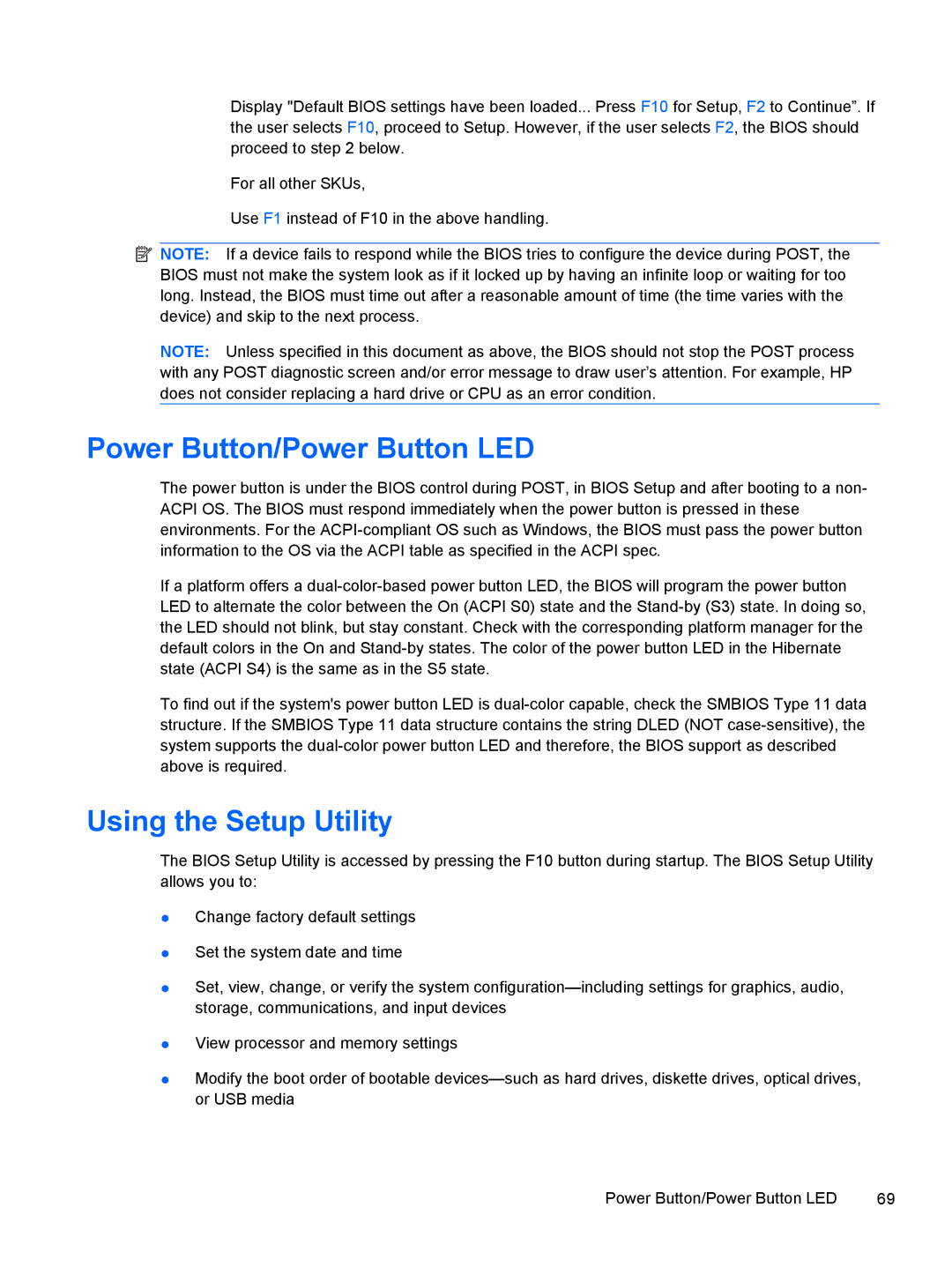
Display "Default BIOS settings have been loaded... Press F10 for Setup, F2 to Continue”. If the user selects F10, proceed to Setup. However, if the user selects F2, the BIOS should proceed to step 2 below.
For all other SKUs,
Use F1 instead of F10 in the above handling.
![]() NOTE: If a device fails to respond while the BIOS tries to configure the device during POST, the BIOS must not make the system look as if it locked up by having an infinite loop or waiting for too long. Instead, the BIOS must time out after a reasonable amount of time (the time varies with the device) and skip to the next process.
NOTE: If a device fails to respond while the BIOS tries to configure the device during POST, the BIOS must not make the system look as if it locked up by having an infinite loop or waiting for too long. Instead, the BIOS must time out after a reasonable amount of time (the time varies with the device) and skip to the next process.
NOTE: Unless specified in this document as above, the BIOS should not stop the POST process with any POST diagnostic screen and/or error message to draw user’s attention. For example, HP does not consider replacing a hard drive or CPU as an error condition.
Power Button/Power Button LED
The power button is under the BIOS control during POST, in BIOS Setup and after booting to a non- ACPI OS. The BIOS must respond immediately when the power button is pressed in these environments. For the
If a platform offers a
To find out if the system's power button LED is
Using the Setup Utility
The BIOS Setup Utility is accessed by pressing the F10 button during startup. The BIOS Setup Utility allows you to:
●Change factory default settings
●Set the system date and time
●Set, view, change, or verify the system
●View processor and memory settings
●Modify the boot order of bootable
Power Button/Power Button LED | 69 |
